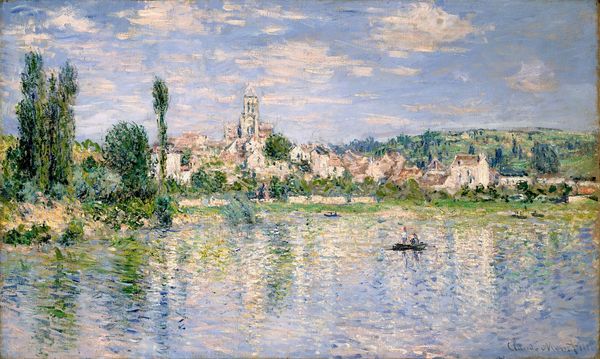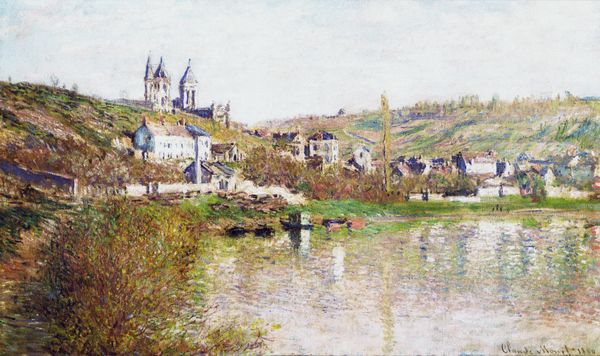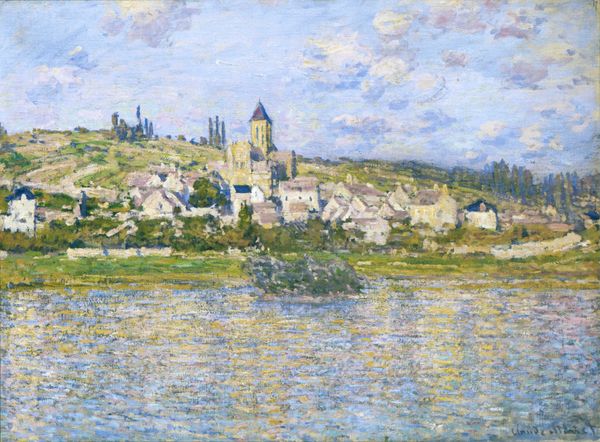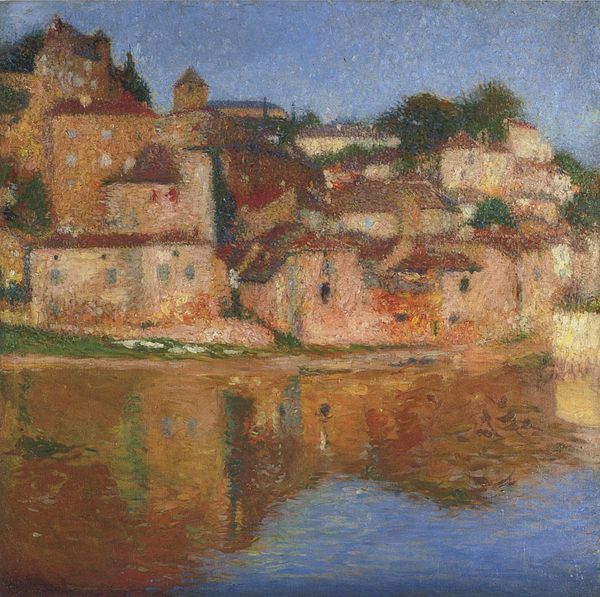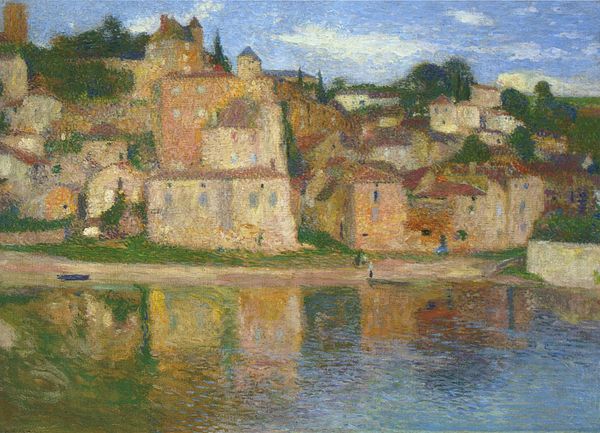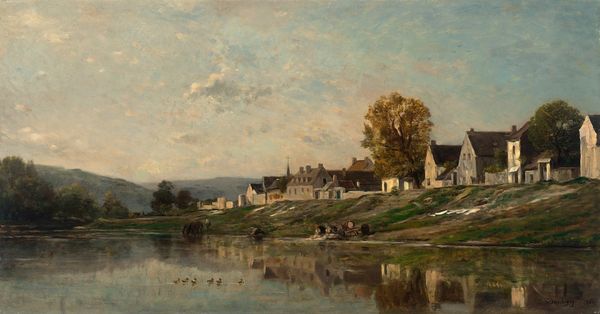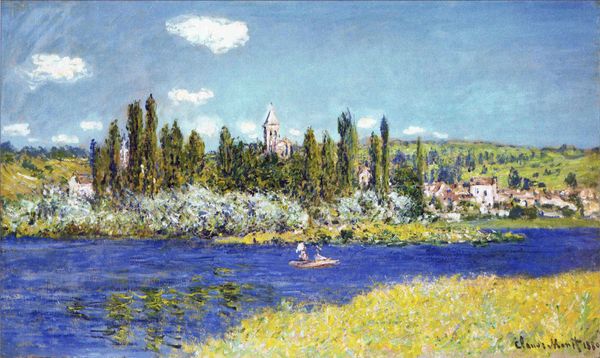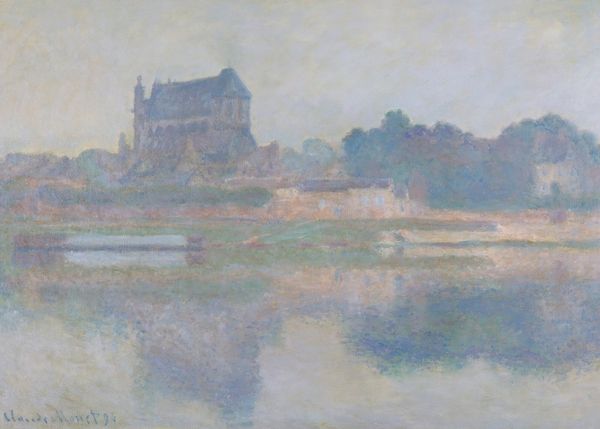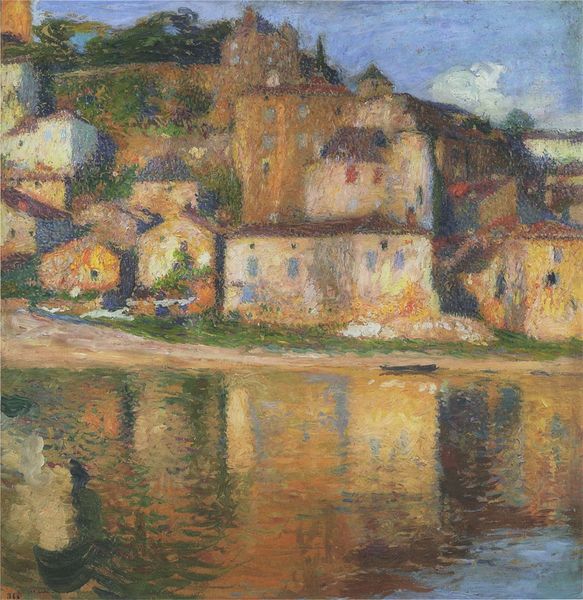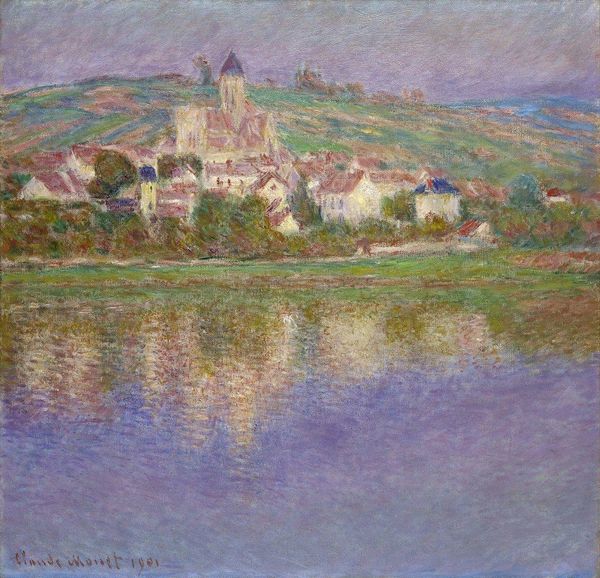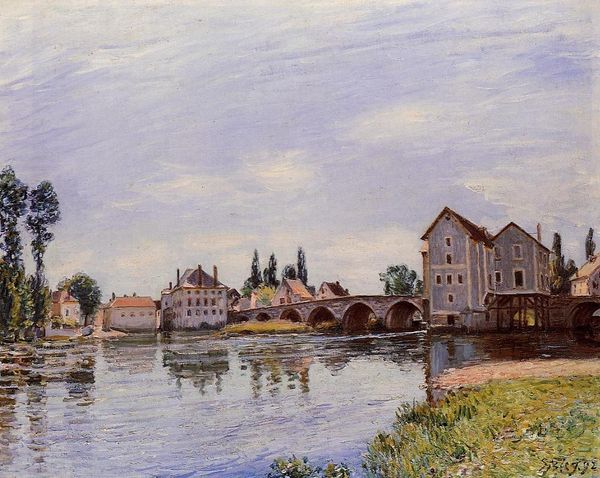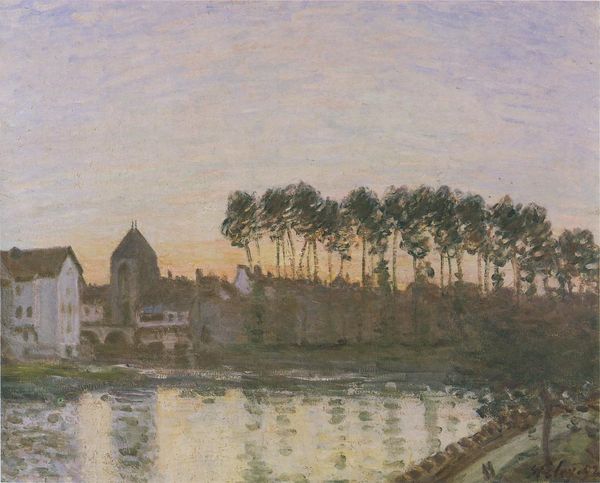
Copyright: Public domain
Editor: "The Seine at Vetheuil," painted in 1879 by Claude Monet... there's a tranquility that almost obscures a starker feeling here, given what Monet was experiencing personally at this time. How does this artwork reflect the broader societal and artistic contexts of late 19th-century France? Curator: Good question. Consider the Impressionists’ relationship with the establishment. The official Salon system often rejected their work, pushing them towards independent exhibitions. Do you think Monet's choice to paint en plein air, capturing fleeting moments of light and atmosphere, can be seen as a form of rebellion against the more traditional, studio-bound academic style? Editor: I hadn’t thought about it that way, but it makes sense. It’s like he's democratizing art – bringing it out of the studio and into the everyday lives of ordinary people, even reflecting this scene with figures rowing a boat down the Seine, right? Curator: Precisely! The Impressionists were fascinated by modern life and the changing urban landscape. Notice how Monet depicts the town of Vétheuil. The quick brushstrokes and dissolving forms might be interpreted as a visual metaphor for the social and political transformations occurring in France at the time. Also, paintings like this popularized smaller towns in France as tourist locations and quick getaways from urbanized Paris, like we see with mass tourism today. What impact do you think this has on historical memory and national identity? Editor: Wow, I see how it challenges our notion of stability and permanence and encourages engagement with the landscape! So the scene is more than just a pretty picture of a river; it's about artistic rebellion and democratizing tourism. Thank you for the expanded view! Curator: Exactly. And it all relates to how institutions and broader cultural trends were shifting artistic practice.
Comments
No comments
Be the first to comment and join the conversation on the ultimate creative platform.
